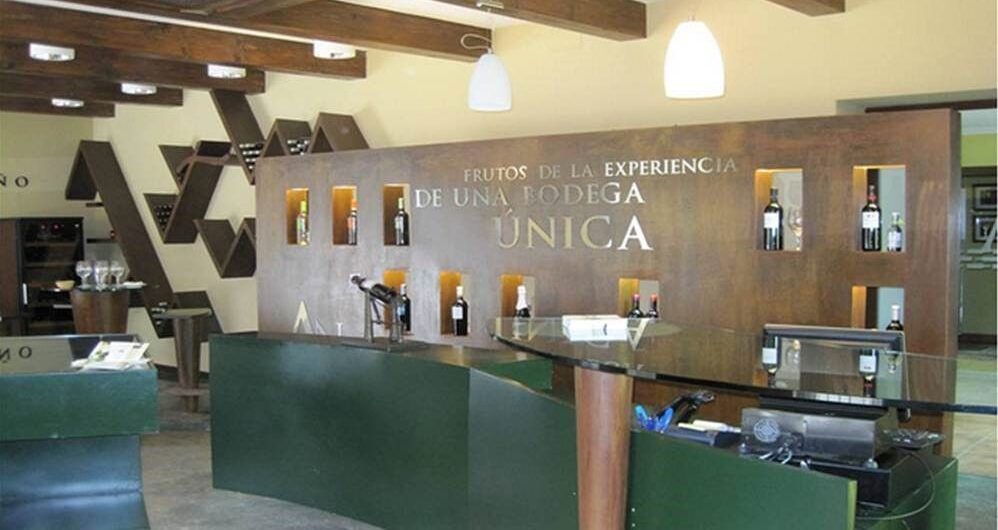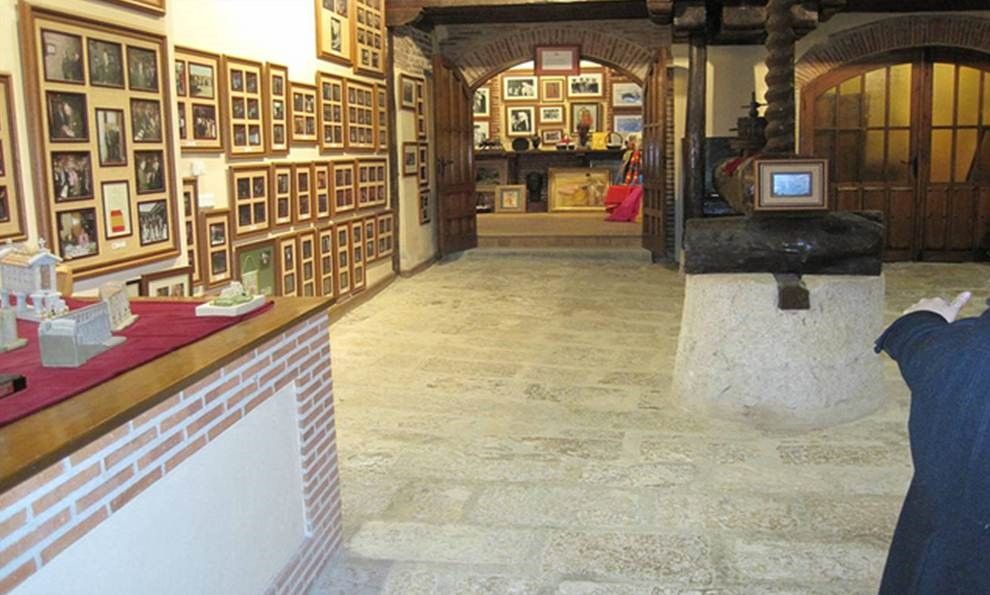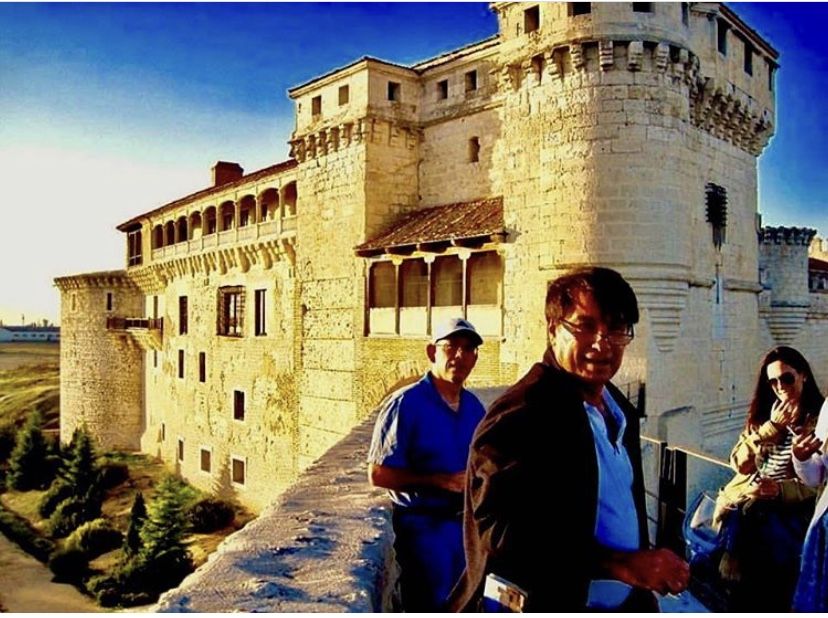Bodegas Mocen. Rueda tours. Differentiate yourself through art and culture
When I visit a winery I am not looking for how it is similar to other wineries. All wineries have many features in common. If that is what you want to see, head to the Peñafiel wine museum.
We visit Rueda in our Rueda Wine Tour
There it is explained exhaustively how the wineries were in the 19th century, in the 20th, and how they are or should be today. What interests me about my visits is to delve into what is different between them, or how to show a brand image through different means.
With this, I intend to be more entertaining among my readers. But I do it mainly because I consider that the best way to succeed in the world of wine is to differentiate yourself from your competitors.
There are thousands of wineries, and differentiating is difficult to achieve, especially when the wineries dedicate most of their marketing budget to attending events and fairs where they offer their products from a table similar to a speech similar to that of their competitors. Of course, it is essential to do that. It is necessary, but it is not enough.
I confess that I am not an not the best taster of the world. And I don’t pretend to be. And although I am interested in what they tell me in this type of event, I am much more interested in what is behind it. In the cellar. In the barrels. In the vineyard.
The last winery I have visited has been Bodegas Mocén, in Rueda. They told us that the visit lasted two hours. That, far from discouraging me, made me think that they surely had a lot to teach. Once again I wonder why some wineries give up charging for guided tours.
It really was a spectacular visit.
José Luis, the creator of this winery.
We were received in their store, very well equipped with a plasma screen on which a video about the winery is continuously broadcast.
Let’s look at the slogans that you see in your store. They speak of “Fruits of an experience of a Unique Winery”, logically referring to their well-known designation of origin in Spain and throughout the world. “The magic of a great winery
The beginning of the visit begins in an open patio, very well decorated with attractive wooden beams. There they already give us some information. The owner is “José Luis”, the owner of the restaurants of the same name that are so successful in Madrid.
José Luis had some partners when he bought the winery back in 1990. And these partners, faced with a series of difficulties, step aside and sell the business to its current owner. José Luis then decides to go solo.
They have a special place in the cellars for Camilo José Cela, Julio Iglesias, and their royal highnesses among many other illustrious people.
According to the guide, it tells us that the “José Luis” manual for success consists of the following: being persistent at work, taking risks, being lucky, and having good friends. In the room we visit, he leads by example.
He has it full (overflowing) with photos of famous and famous people who have passed by. It has a small space dedicated to the world of the bull, very attractive too.
Underground cellars
One of the things he does is dig in the land to store his wines there. And check that there are many, many caves already drilled by former winegrowers. I suppose that for José Luis, each new cave he found made him think he was in “Treasure Island.”
And he dug and dug. I think there are 3 kilometers of galleries. They are impressive, all filled with countless honorific plaques for illustrious visitors. They are authentic catacombs that are preserved in perfect condition and that have been incorporated with the annexation of caves of adjoining wineries.
There is a space in which the state of the caves is shown before being conditioned. You can see there the restoration work that the winery has had to undertake.
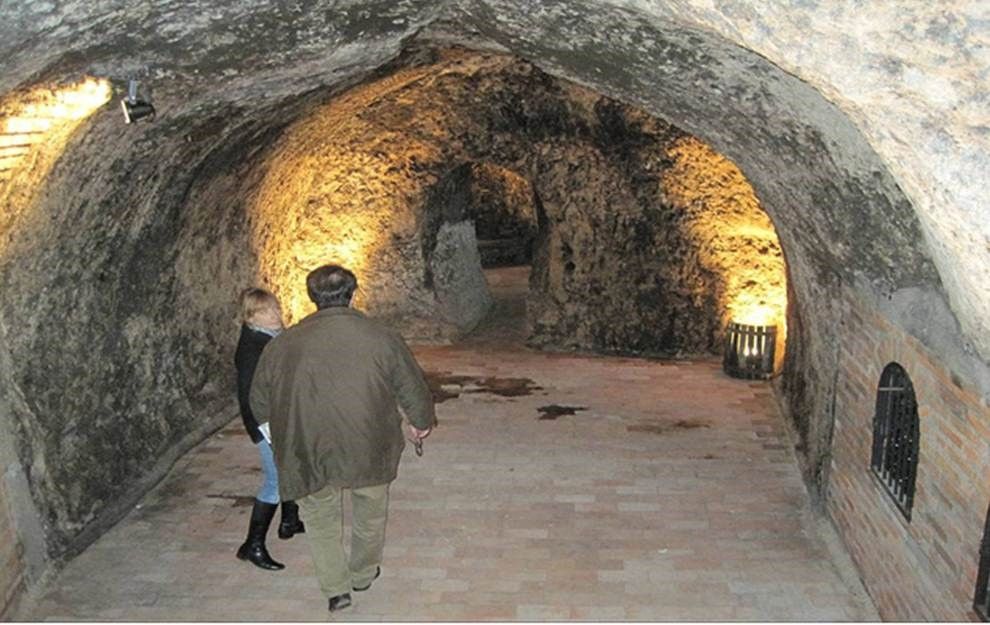
Small open-air fireplaces are often seen for the caves to breathe.
In the caves, we also see barrels, many barrels, very old. It also has a truly spectacular collection of glassware and corkscrews.
Deposit area
We see the deposit area, the very new barrels, a third of which is renewed annually, the filling, labeling, and finished product area. All right. At the time of the visit, 4 operators are packing sparkling wine.
There are 13 people working in the winery for a production of 3.5 MM of bottles.
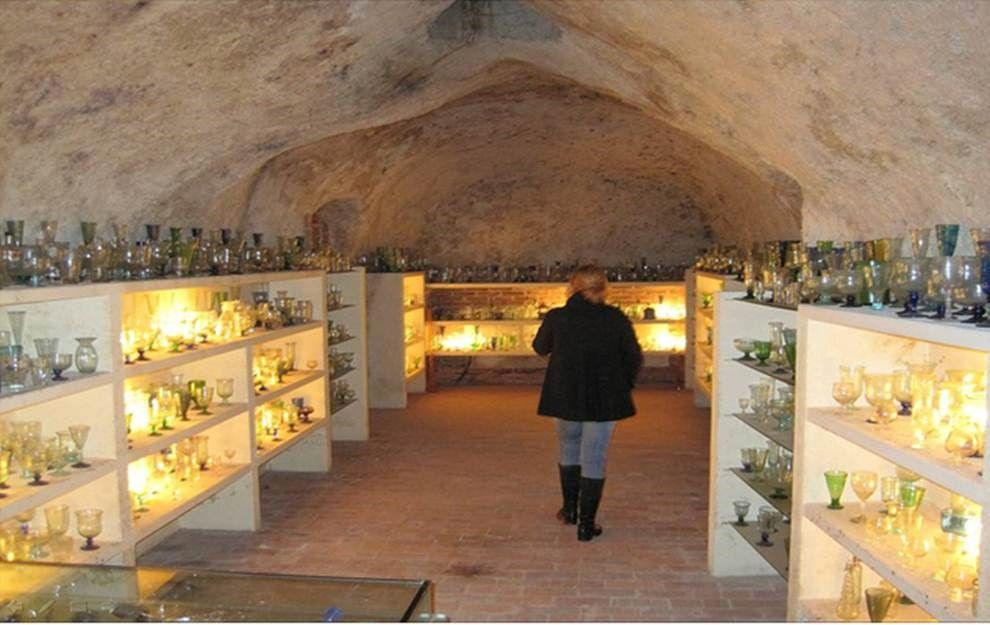
Coming out of the caves, you can see large murals where you can see that good creativity is not forgotten in the generation of images through advertising.
But the visit continues. Down there, they are preparing an area as a restaurant. The room they are preparing will become famous in a short time for sure.
Harry Potter Library. Gallery.
They take us to the Library that looks like something out of a movie from the 50s. Wonderful place to read and write. Just by visiting it, one has the feeling of becoming wiser.
But then comes the Pinacoteca. If the Library is spectacular, the Art Gallery is an authentic past. There are an infinity of pictures in a series of rooms of great dimensions. Many of its authors could be in first-rate museums.
One of the rooms is equipped for company events. The company that makes an event in this place will ensure that none of the attendees forget the place.
In the midst of so much work of art, there is, in a prominent place and on a pedestal, a box of professional shoe cleaner, placed in an urn, which reminds us that José Luis, in his beginnings, was a shoeshine. That started from scratch. That he was a self-made man.
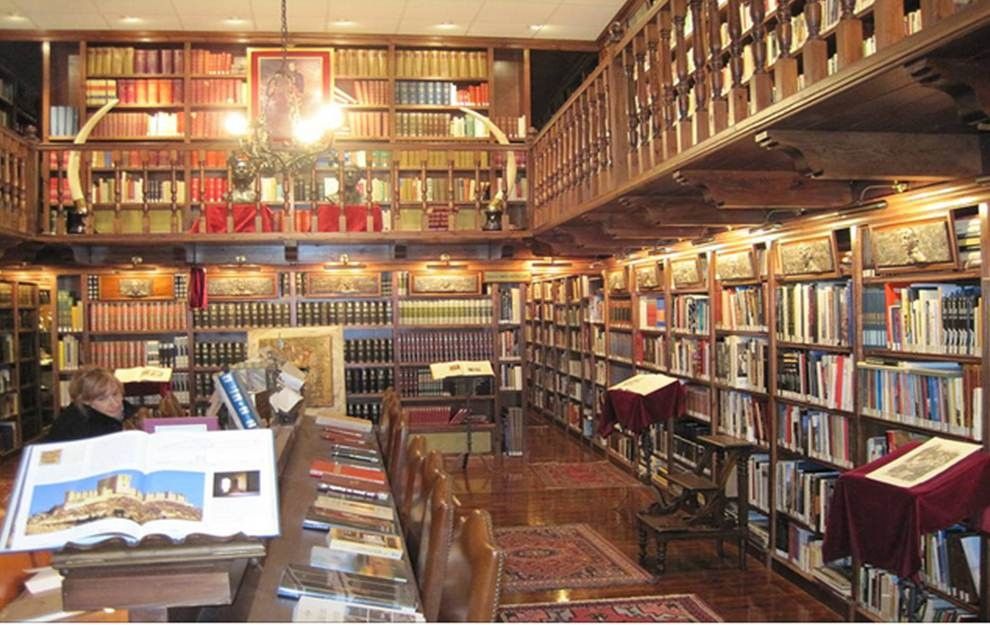
How has the winery expanded? Well, by buying businesses from winemakers who closed because they did not know how to adapt to the new times.
Wine tasting.
The visit ends with a small tasting of their wines. A 2009 Mocen (white, verdejo) and a 2008 Collection (red, tempranillo). The red was not bad, but at the tasting, it was clear why Rueda’s white wine is so successful worldwide.
Mocén seemed generous on the nose, with aromas of hay and tropical fruit, while on the palate it seemed easy to drink, fresh, fruity, consistent, balanced.
They have also a beautiful white with sauvignon white grapes.
They have a small fence next to them that shows different strains and how they happened, with the passage of time of using the strains in the bush, to the trellis cultivation.
The harvest of the grapes is done by machine and is done at night to avoid as much as possible the pre-fermentation before reaching the winery.
After the visit, one has the impression of having visited a large winery and wanting to meet the great businessman who created all that.
This winery is a clear demonstration of how, through art and culture, the brand image of good wine can be strengthened.
We have seen on this visit above all the intrepid and enterprising spirit of its owner. In many wineries I find that I like the wines more depending on how attractive the “alma mater” of the business seems to me.
It is surprising that this entire empire has done so in just 20 years. I left there with the impression of having been with one of the most remarkable entrepreneurs in Spain.
We visit Rueda in our Rueda Wine Tour
Written by
Ignacio Segovia
CEO of Winebus


